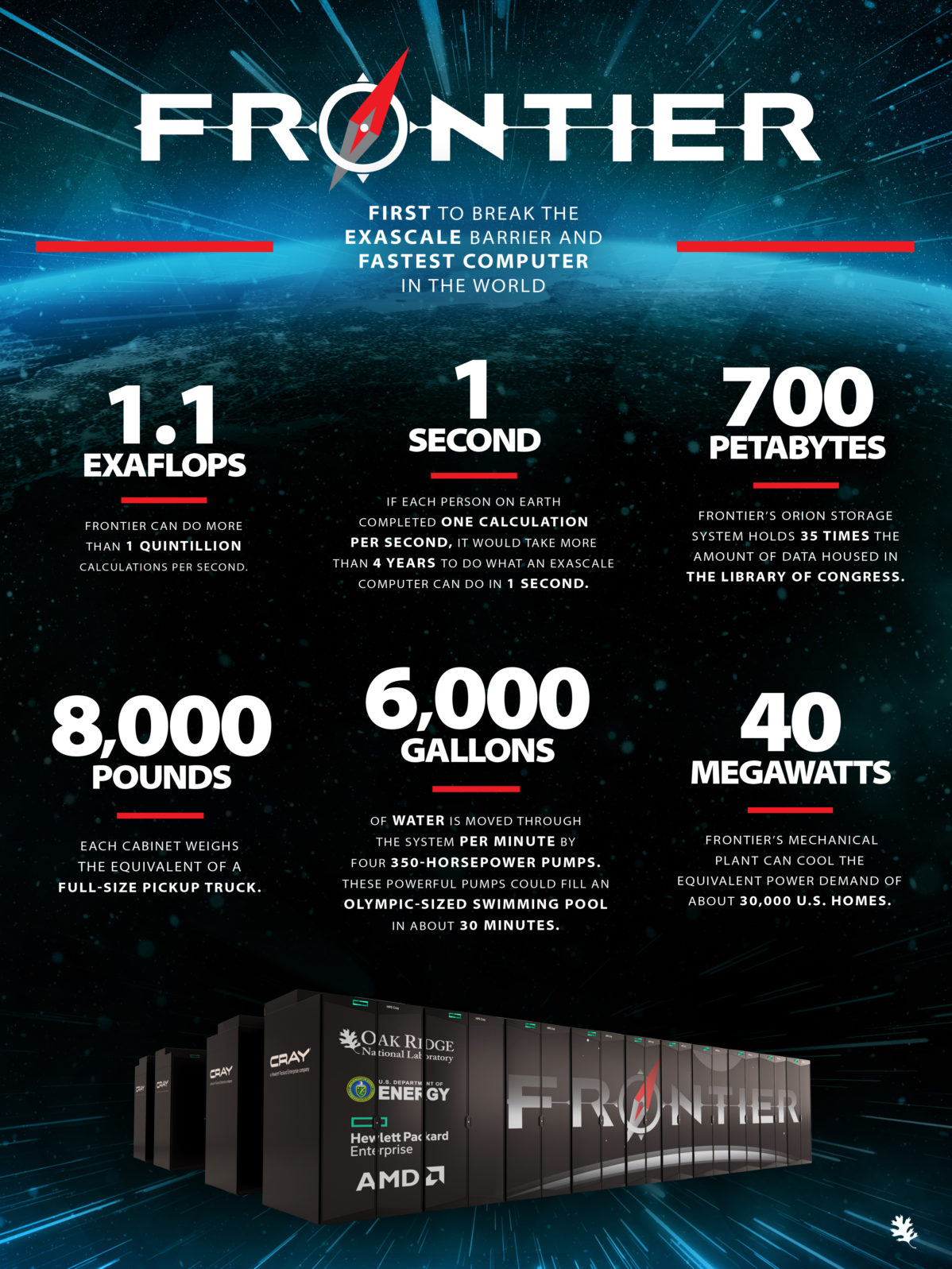World’s Fastest Computer Breaks Into the Exascale
How fast? “If each person on Earth completed one calculation per second, it would take more than 4 years to do what an exascale computer can do in 1 second.”The Department of Energy’s Oak Ridge National Laboratory in Tennessee announced earlier this week that its Frontier Supercomputer, having broken the exascale barrier, is the world’s fastest. It can do more than a quintillion calculations per second:
The Frontier supercomputer at the Department of Energy’s Oak Ridge National Laboratory earned the top ranking today as the world’s fastest on the 59th TOP500 list, with 1.1 exaflops of performance. The system is the first to achieve an unprecedented level of computing performance known as exascale, a threshold of a quintillion calculations per second.
Frontier features a theoretical peak performance of 2 exaflops, or two quintillion calculations per second, making it ten times more powerful than ORNL’s Summit system.
News, “Frontier supercomputer debuts as world’s fastest, breaking exascale barrier” at Oak Ridge National Laboratory (May 30, 2022)
How fast is that?
Frontier dethroned Japan’s ARM A64X Fugaku system, which has held the top spot the past two years. That system is only capable of 442 Petaflop/s of performance, which means Frontier is more than twice as powerful. It’s such a beast that it’s faster than the next seven supercomputers in the list combined.
Josh Norem, “AMD-Powered Supercomputer is The First to Break The Exascale Barrier” at ExtremeTech (June 1, 2022)
Or, as Oak Ridge tells it in an infographic, “If each person on Earth completed one calculation per second, it would take more than 4 years to do what an exascale computer can do in 1 second.”
The computer scientists hope Frontier, three years in the making, will be able to tackle problems that involve staggering masses of data:
With its new exascale capability, researchers aim to simulate how stars explode, calculate the properties of subatomic particles, investigate new energy sources such as nuclear fusion and harness artificial intelligence to improve the diagnosis and prevention of disease, among many other research topics.
Emily Conover, “The world’s fastest supercomputer just broke the exascale barrier” at ScienceNews (June 1, 2022)

From Gizmodo, we learn that China may also have exascale computers:
And while Frontier is indeed the fastest official supercomputer measured by scientists involved in the Top500 rankings, there are rumors China has developed at least two of its own exascale capable machines. If true, that would mark a blow to the U.S. security state which has forged an antagonistic relationship with Chinese supercomputer developers, even going as far as to place seven companies on a trade blacklist last year over alleged national security concerns.
Mack DeGeurin, “Absurd U.S. Supercomputer Becomes First to Officially Enter Coveted Exascale Status” at Gizmodo (May 31, 2022)
Frontier, which is expected to be ready for use by the end of this year, is considered relatively energy efficient as well:
It also snagged the top spot on the Green500 list, which measures energy use and efficiency of commercially available supercomputers. It took the top spot with a performance of 62.68 gigaflops performance per watt according to ORNL. It also took the top spot in the new “mixed precision” category, hitting 6.88 Exaflops. This was measured using the HPL-AI test, which measures the speed of calculations used in machine learning and artificial intelligence.
Josh Norem, “AMD-Powered Supercomputer is The First to Break The Exascale Barrier” at ExtremeTech (June 1, 2022)
Now we will get a better chance to see if Big Data sheds light on the mysteries of the universe.
You may also wish to read: Supercomputer provides a new clue re COVID-19 fatalities. A surprising pattern I found last April: Southern hemisphere countries had significantly lower death rates than northern ones. Summit linked a storm of the hormone bradykynin with COVID deaths. Researchers say Vitamin D may help prevent it, confirming my hemisphere hypothesis. (Eric Holloway)
